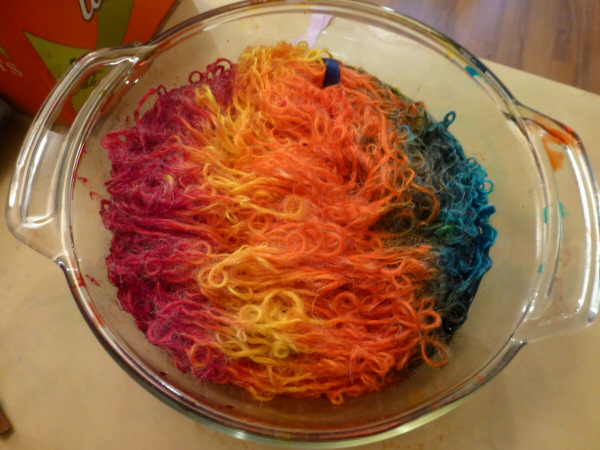

Here’s a closer look at the dyeing process from the post Handspun Bouclé: A Closer Look. This is only one technique I use for dyeing animal fibers. This one is super easy/quick with minimal set up or equipment required.
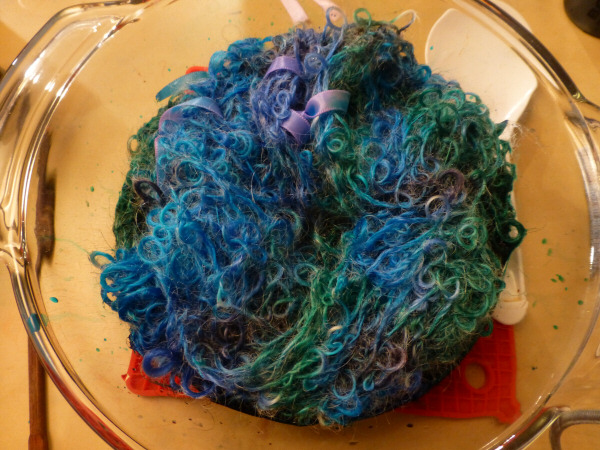
This is my technique for dyeing small amounts of fiber, & it worked well for one skein of yarn. I use an old glass corningware – dedicated to dyeing only, not food – that fits my smallish studio microwave. This microwave is dedicated to crafting only – never used for food. In fact, we don’t even own a microwave for food!
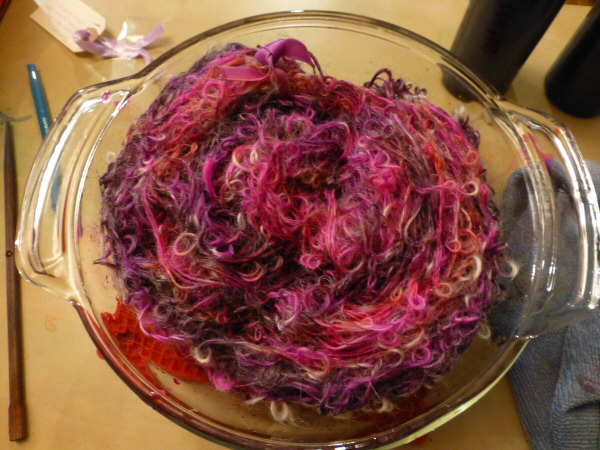
The term “acid dye” sounds really toxic and menacing. But it actually refers to the product used to bond the dye to the fiber. A mild acidic agent is used, normally citric acid or good ol’ kitchen vinegar. Acid dyes are non-caustic and very safe to use. You can even buy dyes such as “Greener Shades” that guarantees no heavy metals, although I have heard criticism that that is a rather trumped up claim since acid dyes normally don’t contain heavy metals. Either way, the piece of mind is there and I have used Greener Shades in the past and enjoy their color palette.
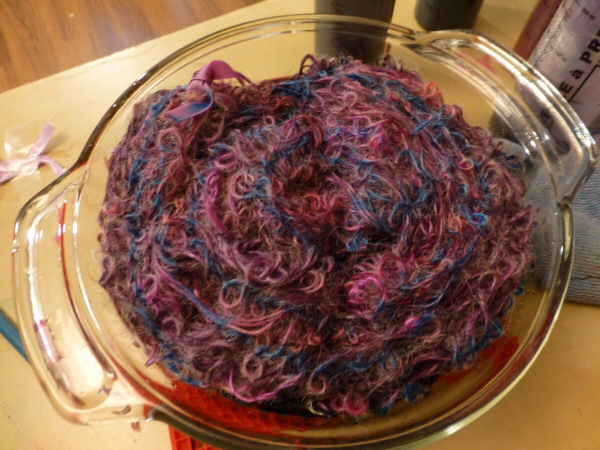
I prefer using citric acid over vinegar. I have found that the color seems to absorb and adhere better to the fiber than vinegar. Which means more vibrant colors and less dye down the sink during the rinsing process. Although admittedly I am getting a better feel for vinegar, due to the fact I had run out one day. It is more readily available in large quantities – you can buy it in bulk at Costco. My citric acid I order online in bulk for the best price.
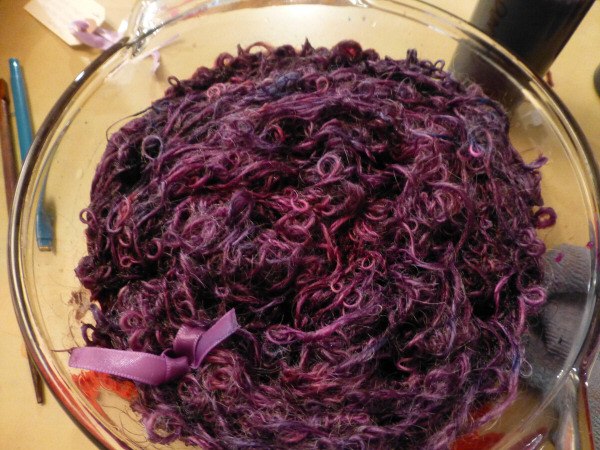
For this particular technique I use low-water immersion. Meaning, there is just enough water to barely cover the yarn. I add either diluted/dissolved citric acid in water or add vinegar to the water. The skein of yarn is carefully placed in the glass bowl, either in a spiral or accordion fashion. I already tied off the yarn in 4 places with ribbon to discourage tangling. Then, I apply the dye via salad dressing bottles bought from the dollar store. The dye comes in powder and I mix it with water ahead of time. I literally squirt on the color!
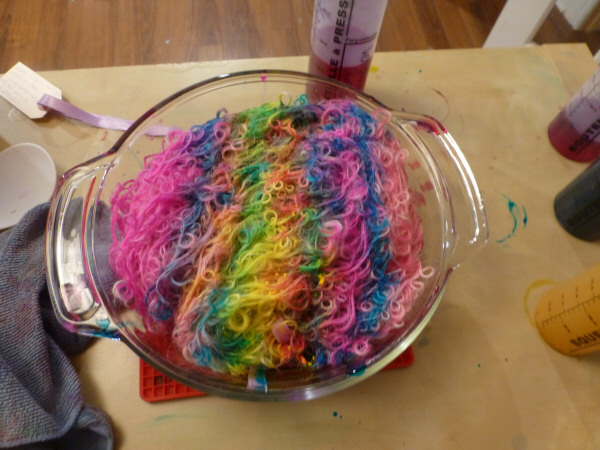
The yarn was soaked ahead of time in warm water with a little synthropol, which is a liquid soap that helps open up the yarn fibers to receive the dye. I then cover with saran wrap and will microwave on high at 5- 7 minute intervals (I’ve gone up to 10 – 12 minute intervals for bulkier amounts of fiber).
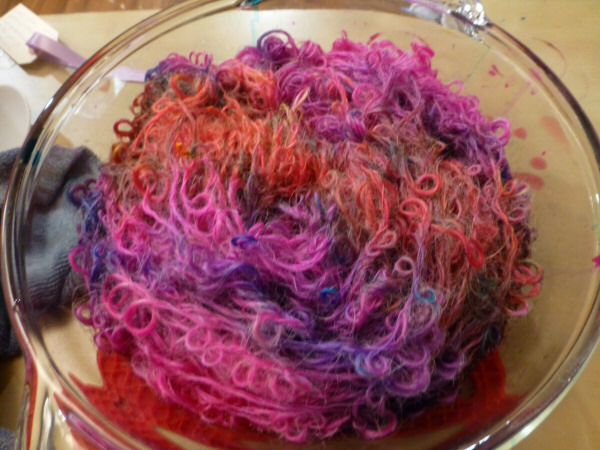
If by 10 minutes the color is not entering into the fiber I will add a little more vinegar or citric acid to the water. Then microwave again. It depends on how many times this happens. The goal is for all the color to be absorbed into the fiber leaving behind clear water.
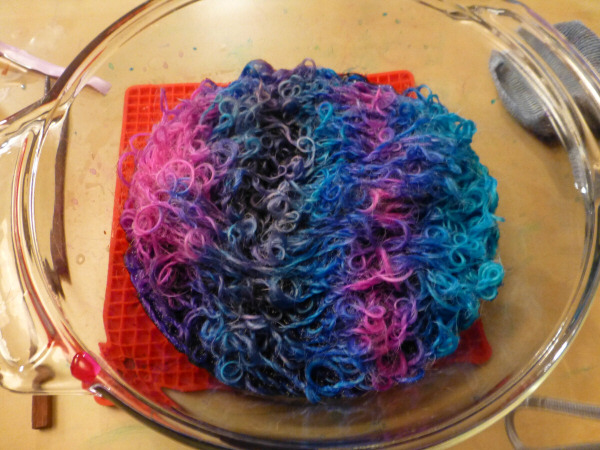
Upon doing this several dozen times, I noticed something interesting. When the water was clear the saran wrap was sucked down into the bowl like an air tight vacuum. The first time I witnessed this I had a heart attack thinking the plastic had melted all over my fleece. But instead it was a perfect dye – water was clear in bowl and no dye escaped when I rinsed it under hot water with a little Dawn dish detergent. Now I continue to microwave in intervals until I see this phenomenon. Then, I let it rest for another 5 minutes before taking it to the sink to rinse.
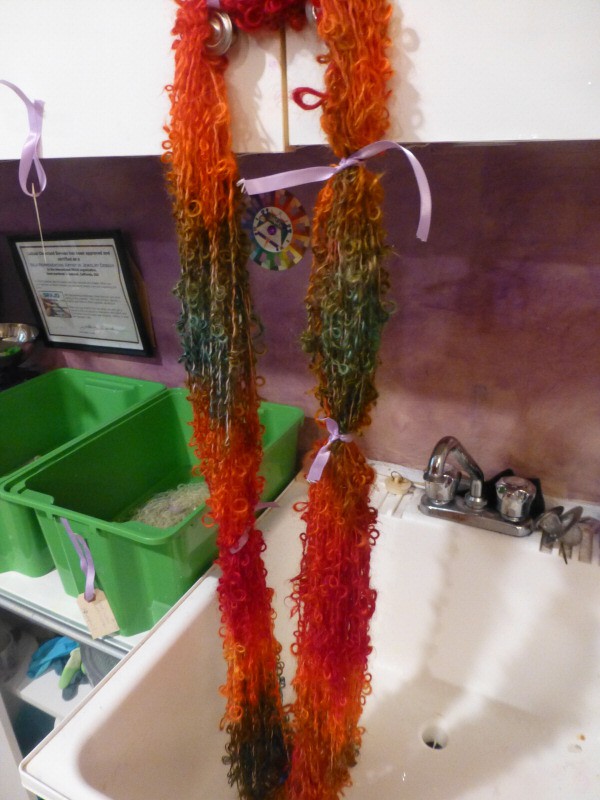
Dyeing seems like an incredibly daunting task until you do it. Then you are amazed at how incredibly simple and satisfying it is. Still, I have a lot to learn with just one year of dyeing fiber under my belt. I need to work on knowing the best combination of colors so not to create a “muddy” color, which I dislike (see the pic above – brilliant oranges and reds, but I was not happy with the turquoise/greens – very dull/muddy. I did remedy this somewhat with a quick overdye to the darker areas. Perhaps another blog post on that technique is warranted). The good news is it is a terribly satisfying practice where the possibilities are as endless as your imagination. And if you don’t like the results, you can always over dye – which gives you a whole new set of results and colors that could blow you away.
![]()

